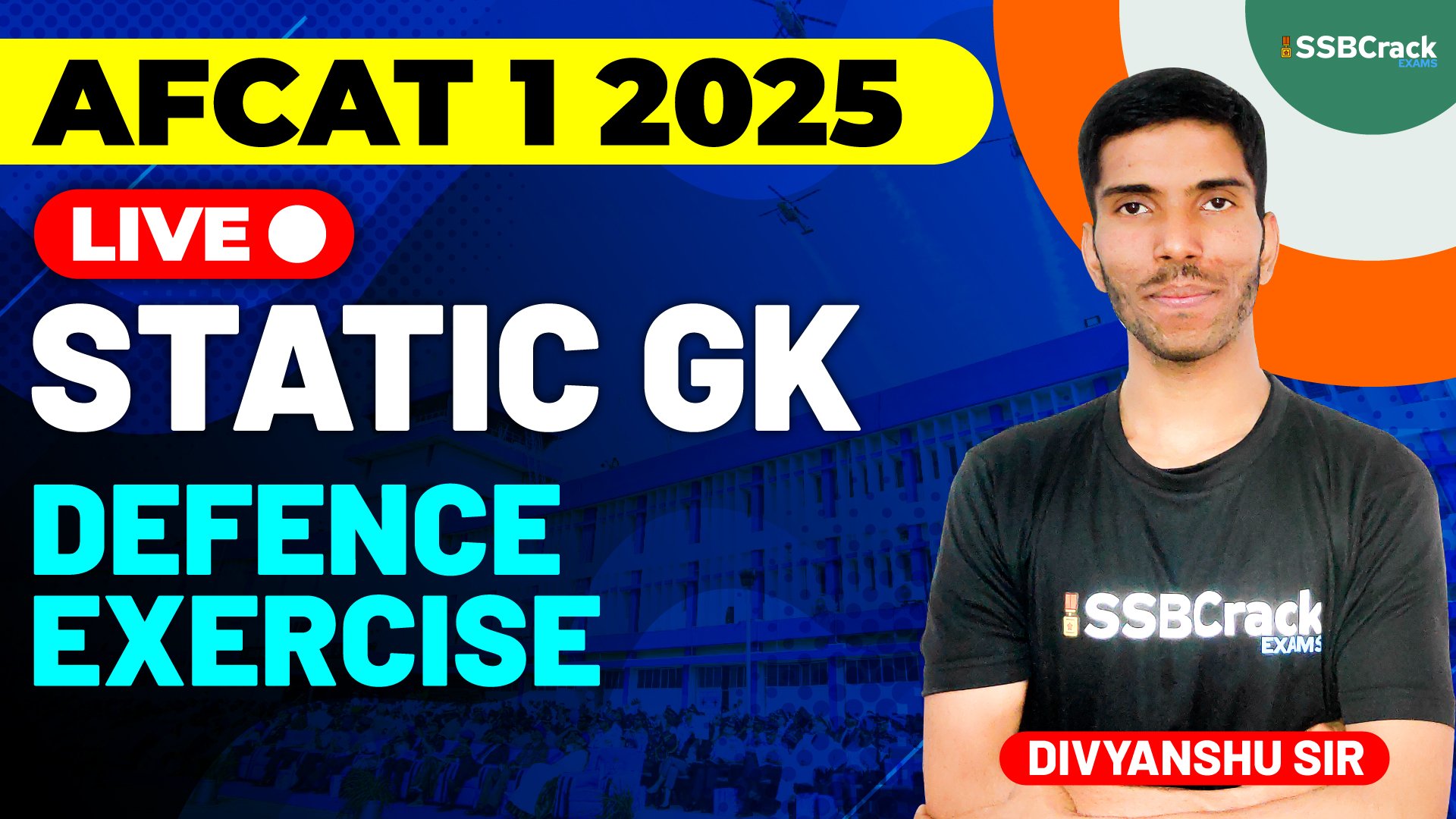The AFCAT (Air Force Common Admission Test) is a critical exam for those aspiring to join the Indian Air Force (IAF).
AFCAT 1 2025 Defence Exercise
The AFCAT (Air Force Common Admission Test) is a critical exam for those aspiring to join the Indian Air Force (IAF). The General Knowledge section of AFCAT often includes questions about major military exercises, both domestic and international. Understanding the key defense exercises not only helps in the exam but also provides insights into India’s defense preparedness, strategic alliances, and military capabilities.
This article highlights the most significant defense exercises that are essential for AFCAT 1 2025.
Why Are Defense Exercises Important?
Defense exercises serve multiple purposes:
- Training and Preparedness: Exercises enhance the operational skills of armed forces.
- Strategic Alliances: Joint military exercises strengthen relationships between nations.
- Technological Advancements: These drills often involve testing new technologies and equipment.
- Interoperability: Collaborative exercises between nations ensure that different forces can work together effectively during real-time operations.
Important Defense Exercises to Focus On for AFCAT 1 2025
1. Exercise Garuda
- Participants: India and France
- Focus: Air combat and operational preparedness.
- Key Features: The Indian Air Force (IAF) and the French Air and Space Force (FASF) conduct this joint air exercise to enhance operational cooperation and the exchange of best practices. Advanced fighter jets like Rafale and Mirage 2000 are involved in this exercise.
2. Exercise Indra
- Participants: India and Russia
- Focus: Land, air, and sea operations.
- Key Features: A bilateral exercise between the armies, navies, and air forces of India and Russia. It strengthens military coordination and joint operational capabilities in counter-terrorism and conventional military operations.
3. Exercise Malabar
- Participants: India, the United States, Japan, and Australia (Quad countries)
- Focus: Naval cooperation and maritime security.
- Key Features: A high-profile naval exercise aimed at enhancing maritime security in the Indo-Pacific region. It showcases joint maneuvers, anti-submarine warfare, and air defense drills.
4. Exercise Yudh Abhyas
- Participants: India and the United States
- Focus: Counter-terrorism operations and interoperability.
- Key Features: An annual bilateral exercise aimed at improving coordination between the Indian Army and U.S. Army in counter-terrorism operations. The exercise also focuses on humanitarian aid and disaster relief (HADR).
5. Exercise Vayu Shakti
- Participants: Indian Air Force
- Focus: IAF operational capabilities.
- Key Features: A domestic exercise conducted by the Indian Air Force to showcase its air combat readiness and firepower. It includes demonstrations of fighter aircraft, attack helicopters, and transport aircraft in live scenarios.
6. Exercise Sampriti
- Participants: India and Bangladesh
- Focus: Counter-insurgency and counter-terrorism operations.
- Key Features: A joint military exercise conducted between the Indian and Bangladeshi Armies. It focuses on enhancing cooperation in tackling insurgency and terrorism and boosting cross-border defense ties.
7. Exercise Shakti
- Participants: India and France
- Focus: Counter-terrorism and urban warfare.
- Key Features: A bilateral military exercise between the armies of India and France. The focus is on counter-insurgency operations, specifically urban warfare in semi-desert regions.
8. Exercise Sea Breeze
- Participants: Multiple nations including India, Ukraine, and NATO members.
- Focus: Maritime security and naval cooperation.
- Key Features: This multinational exercise aims to improve maritime security operations and enhance cooperation among the participating navies in the Black Sea region.
9. Exercise Cope India
- Participants: India and the United States
- Focus: Air force cooperation and operational readiness.
- Key Features: A bilateral air exercise between the IAF and the U.S. Air Force (USAF). The exercise emphasizes air combat tactics, mobility operations, and enhancing mutual understanding between the two forces.
10. Exercise Desert Knight
- Participants: India and France
- Focus: Joint air operations.
- Key Features: A tactical air exercise between the Indian and French air forces, Desert Knight focuses on air-to-air refueling, complex aerial maneuvers, and operational planning under extreme desert conditions.
11. Exercise Milan
- Participants: Indian Navy and friendly foreign navies.
- Focus: Multilateral naval cooperation.
- Key Features: Conducted by the Indian Navy, this biennial exercise involves several nations and focuses on strengthening maritime partnerships, promoting goodwill, and sharing best practices in naval operations.
12. Exercise Ajeya Warrior
- Participants: India and the United Kingdom
- Focus: Counter-terrorism and defense cooperation.
- Key Features: A joint military exercise aimed at enhancing interoperability and sharing expertise in counter-insurgency and counter-terrorism operations in challenging environments.
13. Exercise Pitch Black
- Participants: India, Australia, and other nations.
- Focus: Large-scale air combat training.
- Key Features: Held by the Royal Australian Air Force (RAAF), this multinational air combat exercise involves fighter jets from various countries, including India. It focuses on aerial combat scenarios and improving combat coordination.
14. Exercise Sangam
- Participants: India and the United States (Naval Special Forces)
- Focus: Naval special operations.
- Key Features: This exercise involves the Special Forces of the Indian Navy and the United States Navy’s SEALs. It focuses on joint special operations and counter-terrorism drills in maritime environments.
Tips for AFCAT 1 2025 Defense Exercise Preparation
- Stay Updated: Regularly follow defense news portals, government releases, and reliable news sources for updates on new or ongoing defense exercises.
- Make Flashcards: Create flashcards with the name, participants, focus, and key features of each exercise. This will help you with quick revision.
- Revise Frequently: Defense exercises are updated annually, so it’s essential to keep revising and staying current with new developments.
- Follow Mock Tests: Take practice quizzes and mock tests to test your knowledge of defense exercises. Many online platforms offer defense-specific quizzes tailored for AFCAT.
- Join Study Groups: Participating in online study groups or forums where current affairs and defense exercises are regularly discussed can keep you informed and engaged.
Conclusion
Understanding India’s defense exercises is crucial for scoring well in the AFCAT 1 2025 exam. These exercises reflect India’s growing military cooperation with other nations and its defense capabilities. A thorough study of these exercises, their objectives, and participants will not only help in the GK section of AFCAT but also provide insights into the strategic importance of India’s defense diplomacy.
Prepare well and stay consistent with your revision. Best of luck with AFCAT 1 2025!




















